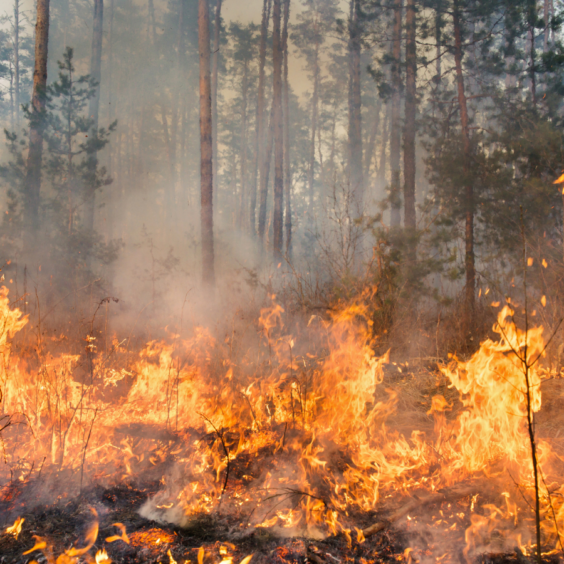 In Wesco Insurance Co. v. Brad Ingram Construction, the Ninth Circuit Court of Appeals reversed a summary judgment ruling in favor of Wesco Insurance Co. after a split panel concluded that toxic dust and debris from a wildfire did not fall under the policy’s definition of “pollutant.”
In Wesco Insurance Co. v. Brad Ingram Construction, the Ninth Circuit Court of Appeals reversed a summary judgment ruling in favor of Wesco Insurance Co. after a split panel concluded that toxic dust and debris from a wildfire did not fall under the policy’s definition of “pollutant.”
Background and Underlying Action
The plaintiff in the underlying lawsuit, Richard Vargas, was allegedly exposed to toxic dust while loading and unloading his work truck during the cleanup of the burn zone of the 2018 fire that destroyed the town of Paradise, California. Reportedly, clouds of dust were “stirred up” when workers loaded Vargas’ truck, and the dust entered his vehicle through its ventilation system.
After driving loads of debris back and forth from the burn zone to a designated waste facility, Vargas subsequently fell ill and was unexpectedly diagnosed with sarcoidosis, an immune disease linked to exposure to environmental toxins. Vargas sued the contractors and subcontractors involved in the cleanup efforts, alleging they did not protect him from the “clouds of toxic dust” that caused his sarcoidosis.
Wesco’s Coverage Action
One of the subcontractors that Vargas sued, Brad Ingram Construction, tendered the suit to its insurer, Wesco. Wesco disclaimed its duty to defend Ingram, asserting that the matter fell within the policy’s “total pollution exclusion endorsement.” Wesco later filed a declaratory judgment action seeking a determination that it owed no duty to defend or indemnify Ingram based on Wesco’s pollution exclusion.
The pollution exclusion in Ingram’s policy excluded coverage for “‘bodily injury’ or ‘property damage’ which would not have occurred in whole or part but for the actual, alleged or threatened discharge, dispersal, seepage, migration, release or escape of ‘pollutants’ at any time.” The policy defined “pollutants” as “any solid, liquid, gaseous or thermal irritant or contaminant, including smoke, vapor, soot, fumes, acids, alkalis, chemicals and waste. Waste includes materials to be recycled, reconditioned or reclaimed.” The sole issue presented in the litigation was whether Wesco’s pollution exclusion barred coverage and thus exempted Wesco from a duty to defend the Vargas lawsuit.
Ruling on cross-motions for summary judgment, the district court held that the toxic dust was a pollutant as defined by the policy because “[b]eyond dictionary definitions and the case law, a reasonable layperson would understand that the release of toxic dust during the removal of debris left behind by a wildfire was environmental pollution.” In reaching this conclusion, the court relied on both the policy’s “expansive language” as well as the California Supreme Court’s 2003 decision MacKinnon v. Truck Insurance Exchange and its progeny, which distinguished between excluded “acts of pollution” and “ordinary acts of negligence involving toxic chemicals.” The district court entered summary judgment in favor of Wesco.
The Split Appellate Decision
That decision was appealed, and the sole question before the Ninth Circuit was whether, under California law, there was any potential for coverage given the pollution exclusion in Ingram’s policy.
The appellate court revisited MacKinnon and noted that determining whether a pollution event has occurred requires consideration of both the character of the injurious substance and whether exposure occurred due to a mechanism specified in the policy. Neither the substance nor the mechanism of exposure is dispositive; rather, they are to be considered “in conjunction” with one another.
In this case, the composition of the dust was not specified except to say that the wildfire waste consisted of “ash, debris, metal, concrete, and contaminated soil.” The mechanism of exposure was Vargas’ allegation that on-site workers “stirred up” the dust deposited in the environment by the fire while loading and unloading debris. Taken together, the Ninth Circuit found that “while wildfire debris may be considered a ‘pollutant’ in certain circumstances, the mechanism of exposure described in the complaint does not clearly constitute an ‘event commonly thought of as pollution.’” Therefore, the court held that the wildfire dust and debris was not a “pollutant,” and the policy’s pollution exclusion did not unambiguously apply to bar coverage for the suit against Ingram.
In reaching this decision, the appellate court also noted that there are no California cases directly on point as to dust created or disbursed by a naturally occurring event. Therefore, doubts as to whether the facts establish the existence of the defense duty must be resolved in the insured’s favor. The court reversed the summary judgment ruling and held that a potential for coverage did exist under Ingram’s policy.
In a lengthy dissent, Judge Forrest stated that the district court’s ruling was appropriate because the dust created by the fire was “part of a pollution event” as evidenced by the fact it was “located in a heavily regulated cleanup area.” According to Judge Forrest, California case law indicates that the circumstances here would be commonly understood as an act of pollution that triggers the pollution exclusion, as the district court held.
